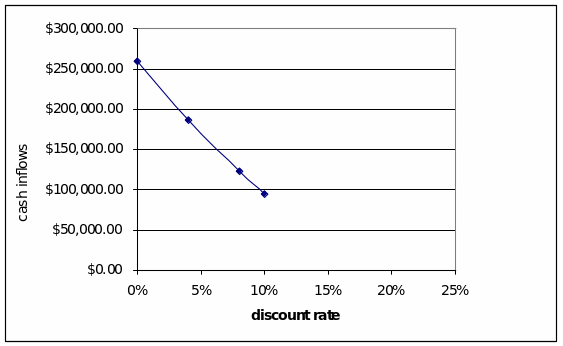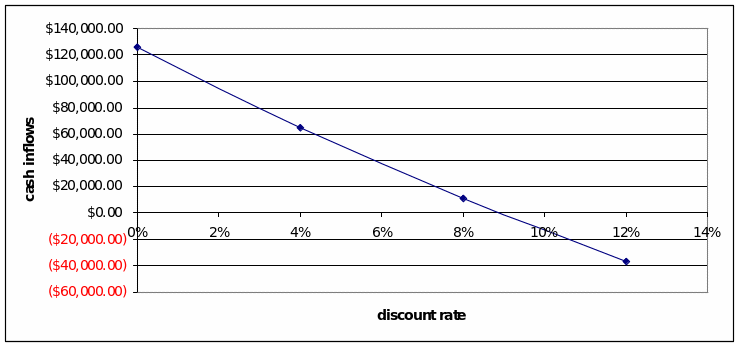Introduction
Finance is the lifeblood of each and every business and capital budgeting is one of the important finance functions. Capital budgeting is the investment decision of a firm i.e. the decision of a firm to invest its funds in the long term assets efficiently. The investment decision may be for expansion, diversification, modernization etc. The firm’s value will be affected by the investment decision i.e. if a firm’s investment is profitable, the firm’s value will increase and it will show growth in the shareholders’ wealth. An investment decision is very much important in the present situation due to the following reasons: it influences the growth of the firm in the long run, the risk, and the fund position of the firm as it requires large funds. NPV (Net Present Value) and IRR (Internal Rate of Return) are the two widely used techniques and care should be given while choosing one of them for measuring the worth of an investment.
Part 1: Capital Budgeting Practice Problems:
a)
Below graph shows the discount rate at X axis and the net present value at Y axis. From the graph it is seen that the curve intersects the horizontal axis at 18% which is the internal rate of return.
Graph showing discount rate and net present value

b) Calculation of NPV
Graph showing discount rate and NPV

By plotting discount rate at X axis and net present value at Y axis we can see that the curve intersects the horizontal axis at 9% which is the internal rate of return.
c) Calculation of net present value.
Profitability index = Present value of cash inflows / Initial investment
Present value of cash inflows = 0.97 * $3.2 million= 3.104 million
NPV and IRR
NPV: it is one of the discounted cash flow techniques. It overtly recognizes the time value of money and says that the cash flow at different time periods will be different in their value. An investment project is selected through NPV by the following rule: If NPV>0 the investment project is selected. If NPV<0 the project is rejected and if NPV=0 the project may be accepted. Zero NPV shows that the cash flows generated are equal to the cost of capital. The NPV is calculated by the following equation: This is generally considered to be the best method for evaluating the capital investment proposal. Under this method cash inflows and cash outflows associated with each projects are worked out. The present value of cash inflows and outflows is then calculated at the rate of return acceptable to the management. Rate of return is considered as the cut rate and is generally determined on the basis of cost of capital. NPV is calculated as sum of the present value cash inflow minus sum of the present value of cash outflows. The steps involved in calculation of NPV are as follows.
- Determination of an appropriate rate of interest to discount the forecasted cash flows.
- Computation of the present value of cash flows by using the discount factor selected.
- Calculation of NPV by subtracting initial capital outlay and commitments at various points of time from the present value of cash inflows.
Net present in the difference between total present value of future cash inflow and total present value of cash outflows. (Traditional value method: Explanation of net present value, 2009).
Advantages of NPV
- This method recognizes the value of money.
- It uses the desired rate of return fixed by management for discounting the cash flows.
- NPV method is always consistent with the objective of maximizing the shareholders’ wealth, welfare and profitability.
- The discounting process facilitates measuring cash flows in terms of present values.
- This method is simpler than the IRR method.
Disadvantages of NPV
- It does not indicate the rate of return which is expected to be earned from the project.
- The determination of the desired rate of return is not simple in calculation and also to understand by different line managers.
- It is very difficult to forecast economic life of project correctly.
- NPV calculation requires the knowledge of discounting process.
- It fails to give satisfactory answer when comparing project with unequal investment of funds and with different economic life periods. (The advantages and disadvantages of NPV, IRR and the payback rule, 2009).
The NPV is calculated by the following equation
NPV = [ C1/(1+k) + C2/(1+k)2 + C3/(1+k)3 + …..+ Cn/(1+k)n] – C0 , where C1, C2, C3, …. Cn are the cash flows; k is the discount rate and C0 is the initial investment
Internal rate of return
IRR is also known as Yield method, Trial and Error Method, Marginal efficiency of capital etc. IRR is a modern technique of capital budgeting which takes into account the magnitude and timing of cash flows. IRR means that the rate of interest which equates the present value of future expected cash inflows, to the present value of cash outflows or cost of investment)
[ C1/(1+r) + C2/(1+r)2 + C3/(1+r)3 + …..+ Cn/(1+r)n] = C0 , where r is the internal rate of return. An investment project is selected with respect to following rules: if IRR>k then the project is accepted, IRR.
Recommendation: Which method is better for making capital budgeting decisions: NPV or IRR?
In certain projects IRR will not be effective and the major drawback is that it uses only one discount rate to evaluate although it simplifies the calculation. From the above practical problems we can recommend NPV method for capital budgeting because IRR does not measure the actual investment or return. In case of negative cash inflows the value of IRR will be affected. In case of long term projects IRR is not suitable as the discount rates may vary in the long run. Using NPV has certain advantages because it uses multiple discount rates.
The same principle of NPV is applied to IRR. NPV shows future cash flows at different discount rates whereas IRR computes a break even rate of return at which the cash outflows equal to cash inflows.
Conclusion
The firm’s success depends upon the capital budgeting decisions taken by the management. There are many techniques used in capital budgeting for evaluating an investment project. Different companies use different techniques either NPV or IRR. Using IRR (Internal Rate of Return) and NPV (Net Present Value) often has the same findings. So while taking capital budgeting decisions cash flows should be considered and not the profits.
References
Internal rate of return. (2009). Investopedia: A Forbes Digital Company.
The advantages and disadvantages of NPV, IRR and the payback rule. (2009).
Traditional value method: Explanation of net present value. (2009). 12 Manage: The Executive Fast Track.